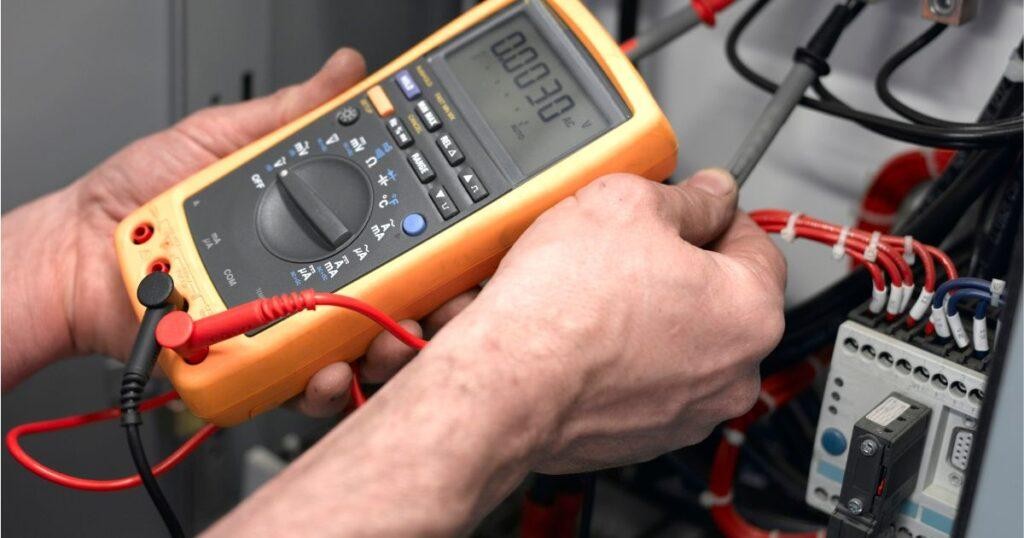Portable Appliance Testing (PAT) is a crucial process for ensuring the safety of electrical appliances used in various settings, particularly in workplaces. Regular PAT testing helps prevent electrical accidents, ensures compliance with legal requirements, and maintains the overall safety of the environment. This blog will provide an in-depth look at PAT testing, its importance, and what to expect during the process.
What is PAT Testing?
PAT testing, or Portable Appliance Testing, involves a series of inspections and tests carried out on electrical appliances to ensure they are safe to use. The process includes both visual examinations and instrument-based tests to identify potential faults or hazards.
Why is PAT Testing Important?
- Safety: Faulty electrical appliances can pose serious risks, including electric shocks, fires, and injuries. PAT testing helps identify and mitigate these risks, ensuring a safer environment for everyone.
- Legal Compliance: In many countries, including the UK, employers and landlords have a legal obligation to ensure the electrical safety of appliances used in their premises. Regular PAT testing helps fulfill these legal responsibilities.
- Preventive Maintenance: Regular testing can identify minor issues before they become major problems, reducing the likelihood of appliance failure and extending the lifespan of your equipment.
- Insurance: Many insurance policies require evidence of regular PAT testing as part of their terms. Keeping up-to-date records can simplify insurance claims and avoid complications.
- Peace of Mind: Knowing that all electrical appliances have been tested and deemed safe provides peace of mind to employers, employees, and tenants.
What Does PAT Testing Involve?
PAT testing typically involves the following steps:
- Visual Inspection: The first step is a thorough visual examination of the appliance, including its plug, cable, and casing. The tester looks for visible signs of damage, such as cracks, exposed wires, or loose connections.
- Earth Continuity Test: This test checks if the earth wire is properly connected, ensuring that in the event of a fault, the electrical current will safely discharge to the ground.
- Insulation Resistance Test: This test measures the resistance of the appliance’s insulation to ensure it is adequate to prevent electric shocks.
- Polarity Check: For appliances with plugs, this test ensures that the live, neutral, and earth wires are correctly connected.
- Functional Checks: Some PAT testing includes functional checks to ensure the appliance operates as intended without any faults.
- Labeling and Documentation: Once an appliance passes the tests, it is labeled with a PAT testing sticker indicating the date of the test and the next due date. Detailed records are kept for future reference and compliance.
Frequency of PAT Testing
The frequency of PAT testing depends on the type of appliance and its usage environment. General guidelines include:
- Office Equipment: Every 1-2 years
- Portable Equipment (frequently moved): Every 6 months to 1 year
- Industrial Equipment: Annually
- Domestic Appliances in Rental Properties: Annually or at the change of tenancy
It’s important to conduct a risk assessment to determine the appropriate testing frequency for your specific situation.
Choosing a Qualified PAT Tester
When selecting a PAT testing service, consider the following:
- Certification: Ensure the tester is qualified and certified to perform PAT testing. In the UK, for example, look for certification from recognized bodies such as NICEIC or City & Guilds.
- Experience: Choose a service with experience in testing the types of appliances you have.
- Reputation: Check reviews and ask for recommendations to find a reliable service provider.
- Equipment: Ensure the tester uses up-to-date and calibrated testing equipment.
Preparing for PAT Testing
To prepare for a PAT testing session:
- Inventory: Make a list of all appliances that need to be tested.
- Access: Ensure that all appliances are accessible and not in use during the testing period.
- Documentation: Have previous PAT testing records available for reference.
- Communication: Inform staff about the testing schedule to minimize disruptions.
Conclusion
PAT testing is an essential practice for maintaining electrical safety in workplaces and rental properties. By conducting regular PAT tests, you can prevent accidents, ensure compliance with legal requirements, and extend the lifespan of your appliances. Choosing a qualified PAT tester and preparing adequately for the testing process can make the experience smooth and efficient. Prioritize PAT testing to create a safer environment for everyone involved.
4o
